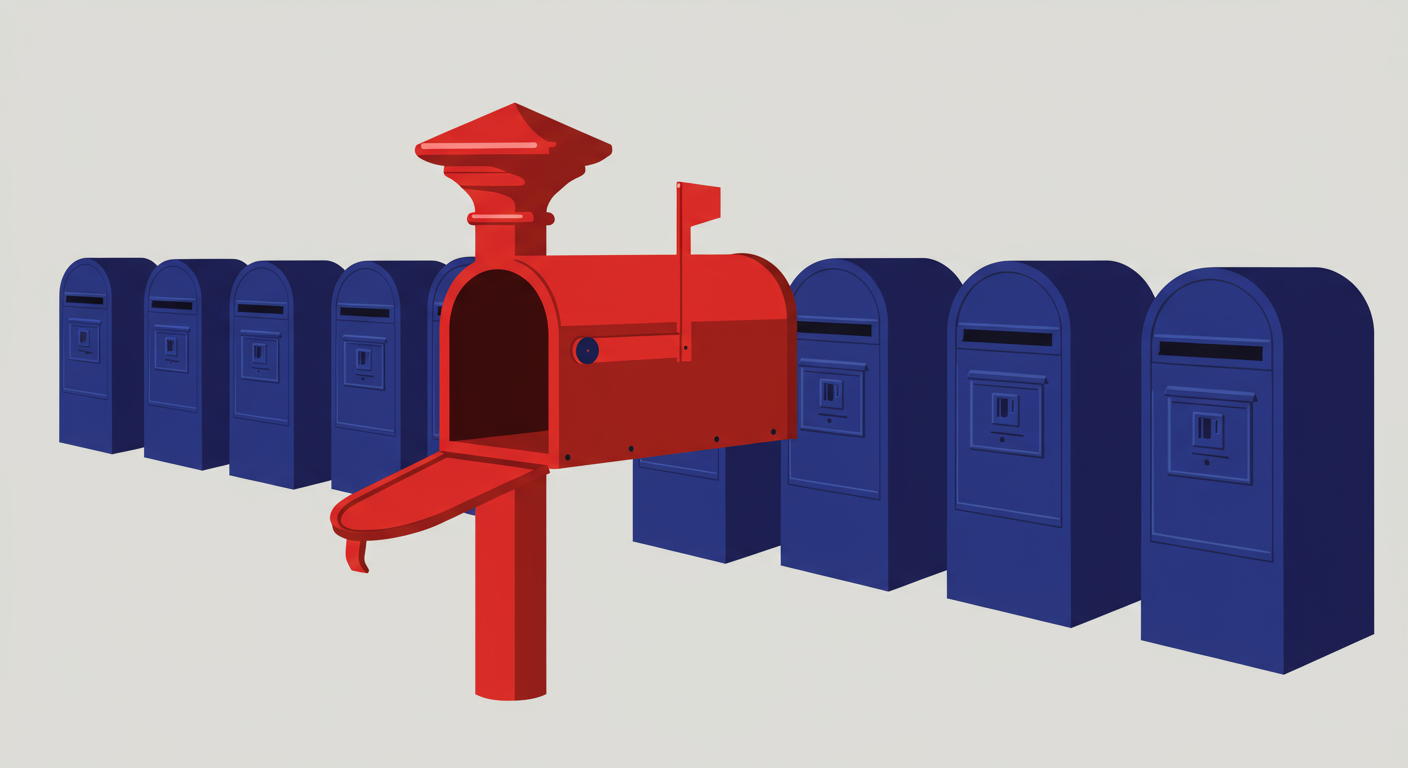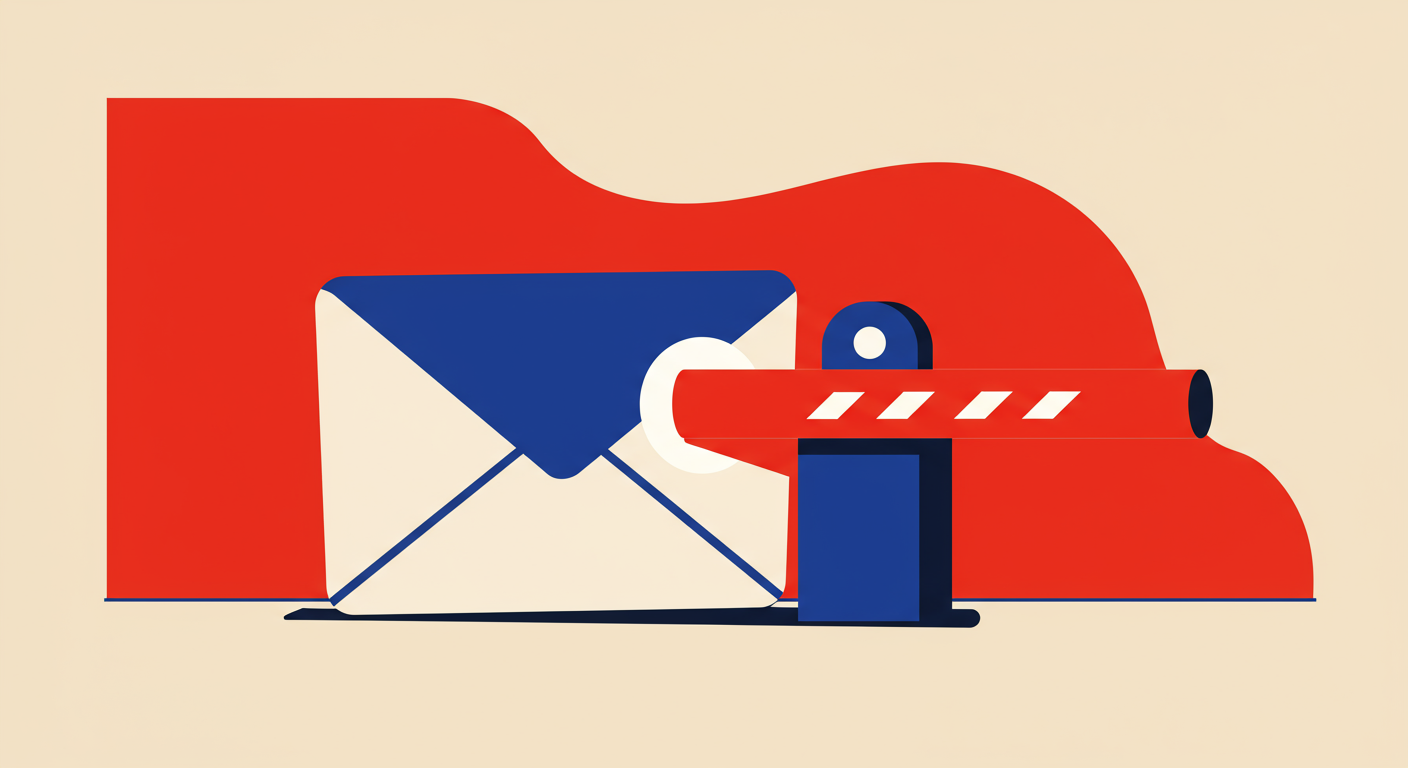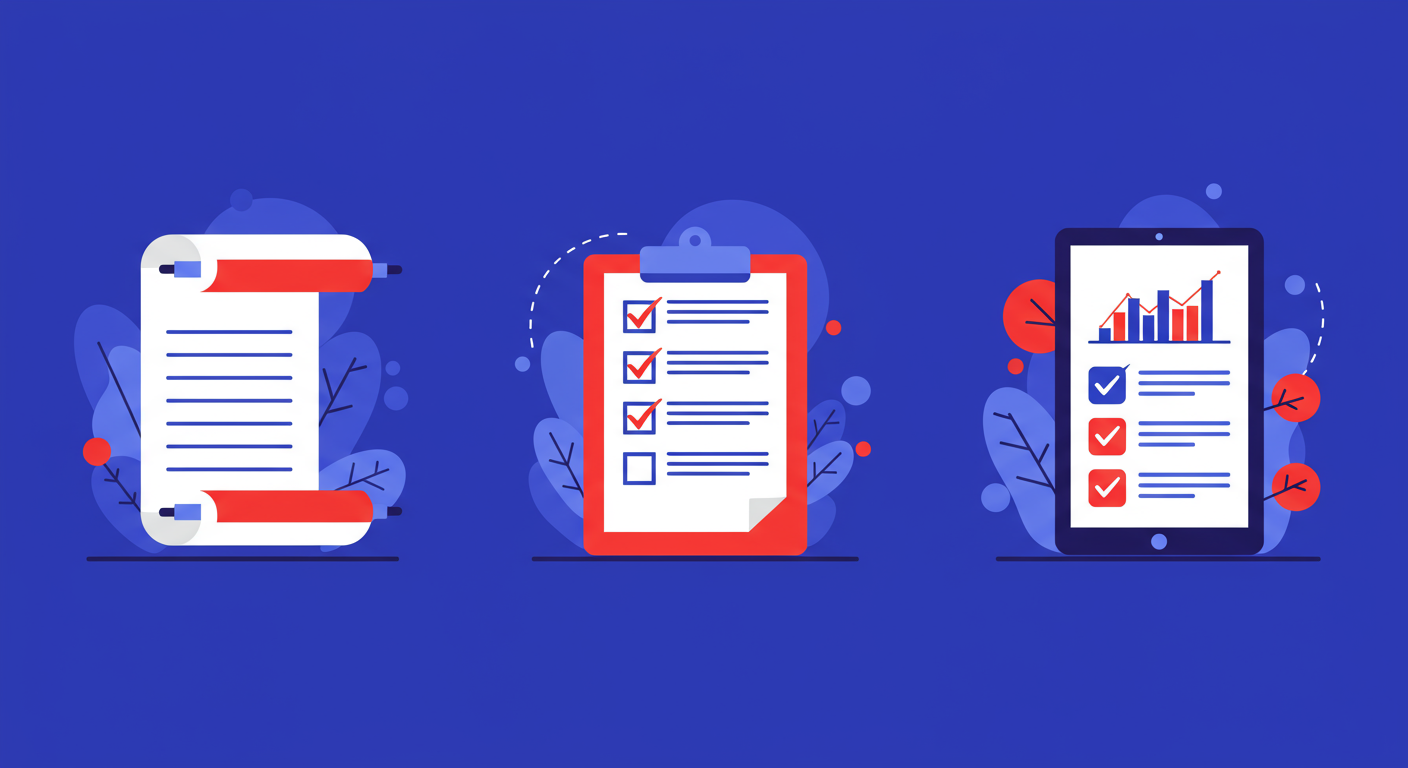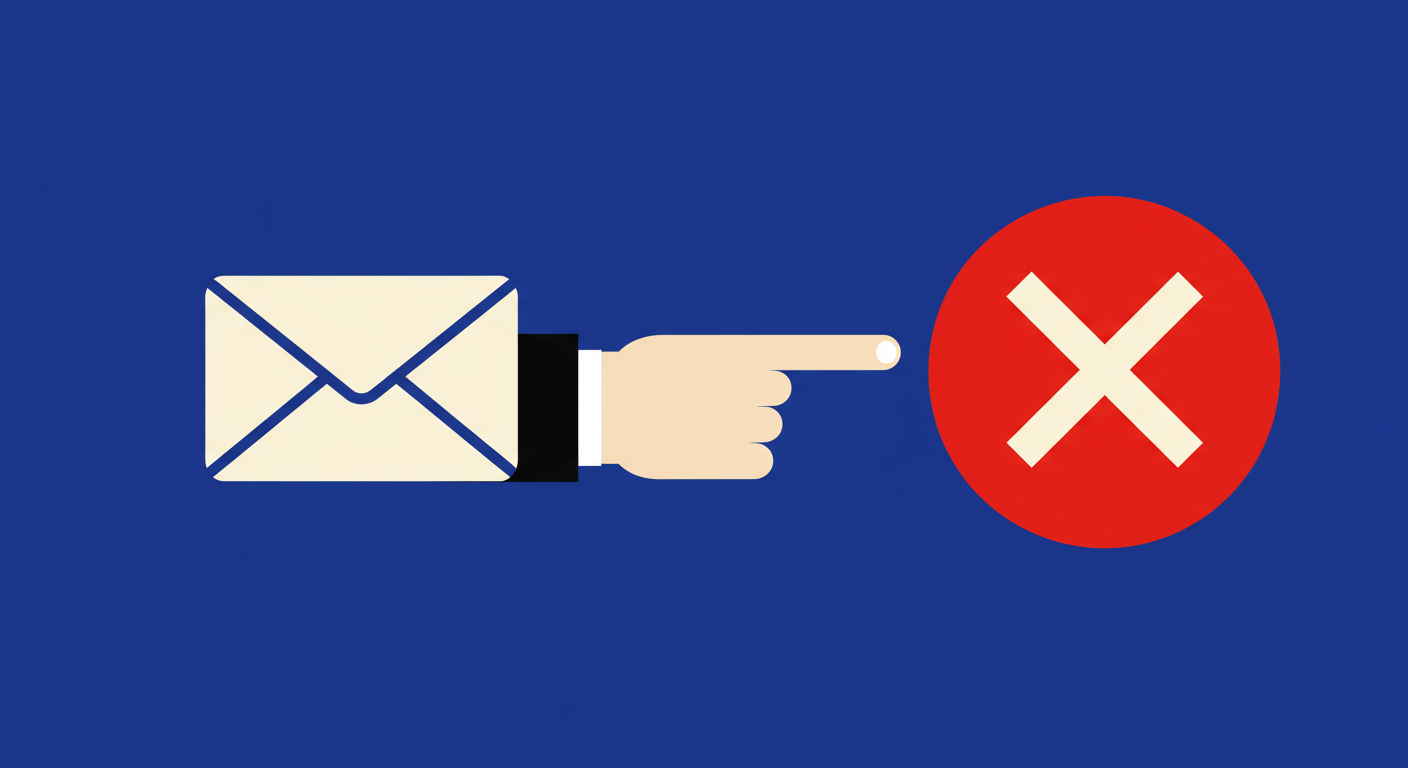What happens when your domain is on an email blacklist?


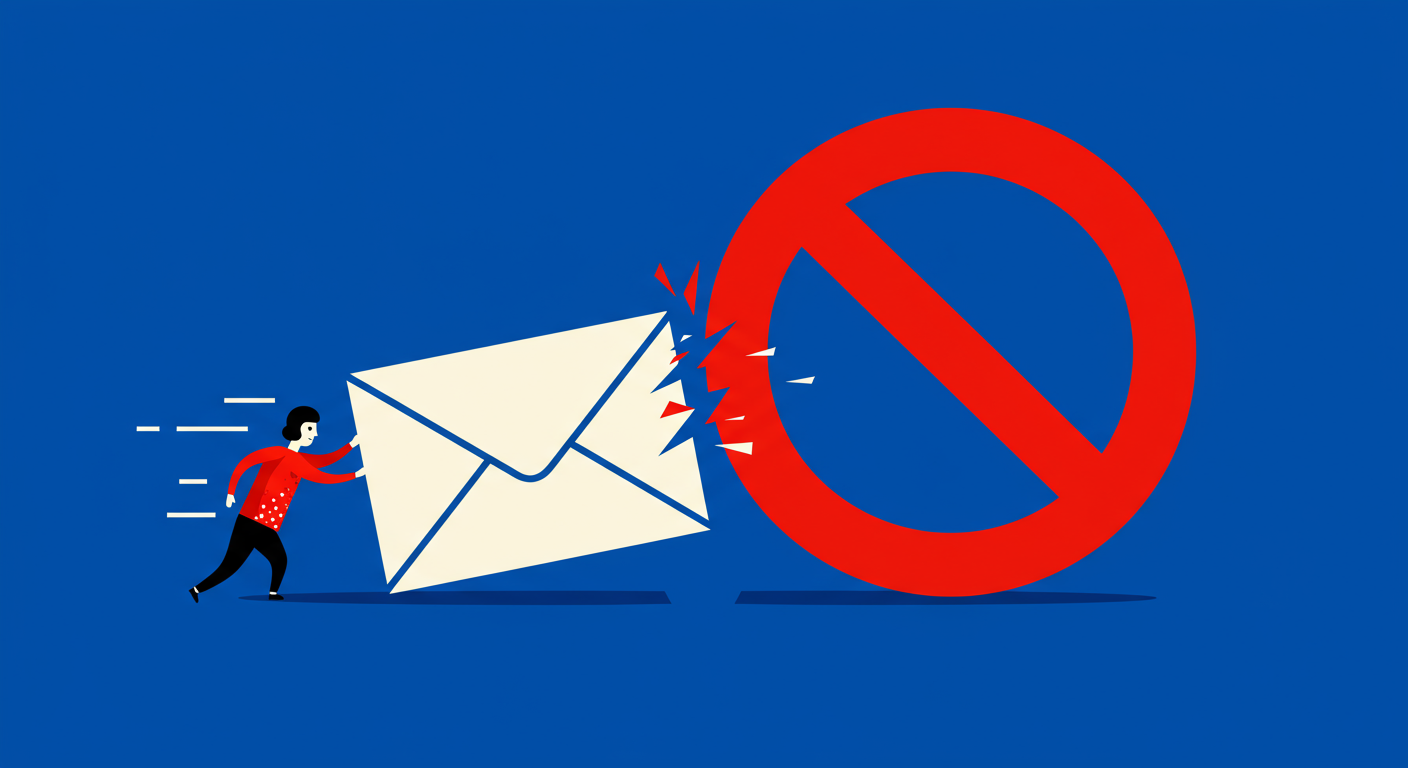
There's a specific kind of dread that sets in when you realize your emails aren't being delivered. You've sent out a crucial marketing campaign, important transactional updates, or even just day-to-day communications, but your audience is hearing silence. One of the most common and damaging reasons for this is finding your domain or IP address on an email blocklist.
An email blacklist, or blocklist, is essentially a real-time database that identifies IP addresses or domains believed to be sending spam. Mailbox providers like Gmail and Outlook use these lists to protect their users from unwanted and potentially malicious content. If you're on one, the provider's servers might reject your emails outright, meaning the message never reaches the intended recipient's inbox.
The impact of being blacklisted goes far beyond a few failed emails. It can have a cascading effect on your deliverability, reputation, customer trust, and ultimately, your bottom line. Understanding these consequences is the first step toward building a resilient email strategy that keeps you in the inbox and off these damaging lists.
The most direct and immediate consequence of being on a blocklist is a severe drop in your email deliverability. When a mailbox provider checks a blacklist and finds your sending IP or domain, it can trigger one of two outcomes. The first is an outright block, where the server refuses to accept the email, generating a hard bounce. The second is routing the email directly to the spam folder, where it's unlikely to be seen.
This isn't an isolated problem with a single provider. Major blocklists, such as those operated by Spamhaus, SURBL, and Invaluement, are used by a vast network of email providers, corporations, and governments worldwide. Landing on just one of these major blacklists can prevent you from reaching a huge portion of your audience across different platforms like Gmail, Microsoft 365, and Yahoo.
The negative effect on an email marketing campaign is obvious- missed sales, poor engagement, and wasted effort. But this also cripples essential transactional emails. Imagine a new user who can't receive their account verification email or a customer who never gets their password reset link. These failures create immediate frustration and can stop a customer journey dead in its tracks.
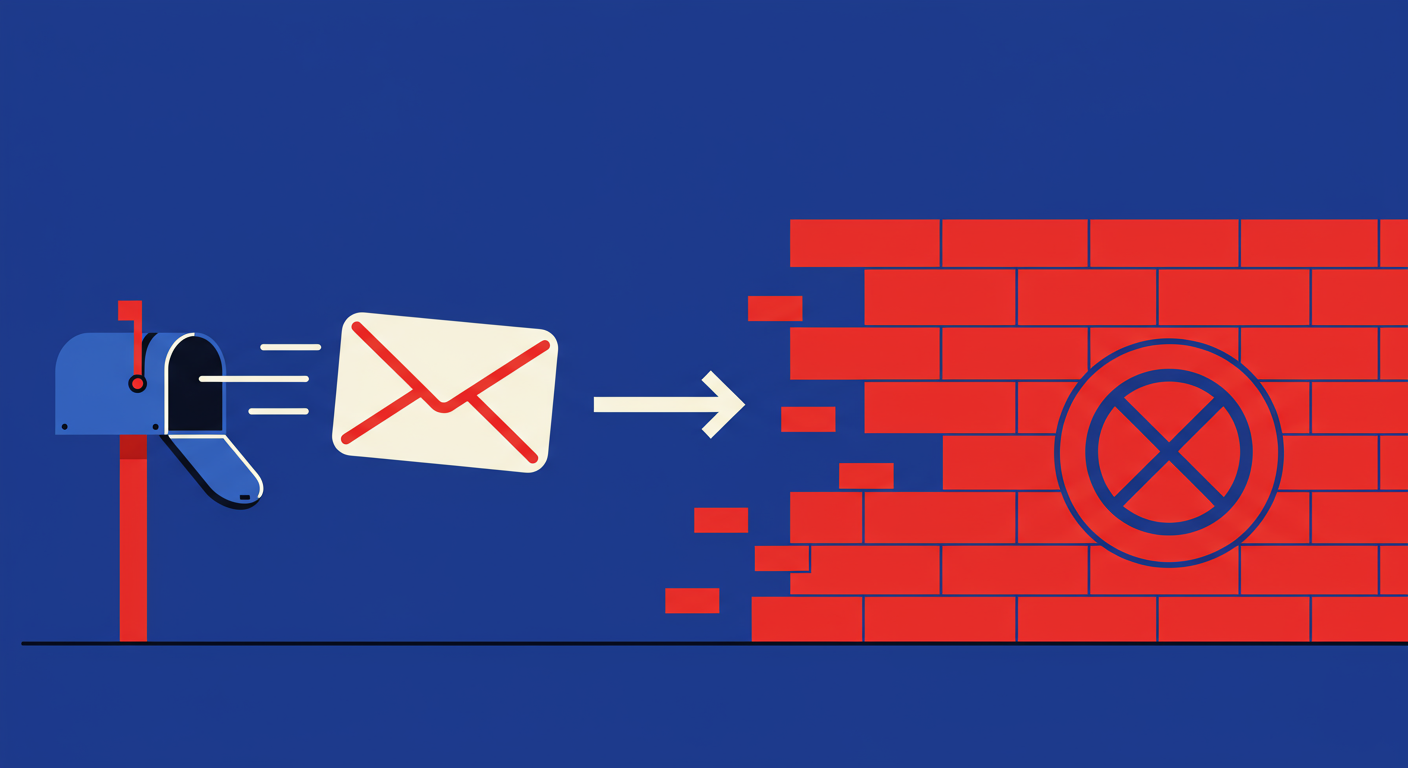
Beyond the immediate delivery failures, getting blocklisted inflicts serious harm on your sender reputation. Think of your sender reputation as a credit score for your email program. Mailbox providers use it to decide whether to trust your messages. A blocklist entry is a major negative mark on that record, signaling to the world that you are a risky sender.
Unfortunately, rebuilding a damaged sender reputation is a slow and arduous process. Even after you’ve identified the cause, fixed the problem, and successfully requested removal from the blacklist, mailbox providers will remain wary. They will continue to monitor your sending patterns closely, and your emails might face stricter filtering or throttling for weeks or even months. Trust, once lost, must be re-earned over time through consistent, positive sending behavior.
This reputational damage creates a ripple effect. A poor reputation can influence more than just your inbox placement. Both the IP reputation and the domain reputation can suffer, which can lead to other deliverability issues that are harder to diagnose. You might see more of your mail being deferred (temporarily rejected) or find it harder to warm up new IP addresses associated with your domain in the future.
 Spamhaus
Spamhaus 0Spam
0Spam Cisco
Cisco NoSolicitado
NoSolicitado URIBL
URIBL abuse.ro
abuse.ro ALPHANET
ALPHANET Anonmails
Anonmails Ascams
Ascams BLOCKEDSERVERS
BLOCKEDSERVERS Calivent Networks
Calivent Networks EFnet
EFnet
 JustSpam
JustSpam Kempt.net
Kempt.net
 NordSpam
NordSpam RV-SOFT Technology
RV-SOFT Technology
 Scientific Spam
Scientific Spam Spamikaze
Spamikaze SpamRATS
SpamRATS SPFBL
SPFBL Suomispam
Suomispam System 5 Hosting
System 5 Hosting Team Cymru
Team Cymru Validity
Validity www.blocklist.de Fail2Ban-Reporting Service
www.blocklist.de Fail2Ban-Reporting Service ZapBL
ZapBL 2stepback.dk
2stepback.dk Fayntic Services
Fayntic Services ORB UK
ORB UK technoirc.org
technoirc.org TechTheft
TechTheft Spamhaus
Spamhaus 0Spam
0Spam Cisco
Cisco NoSolicitado
NoSolicitado URIBL
URIBL abuse.ro
abuse.ro ALPHANET
ALPHANET Anonmails
Anonmails Ascams
Ascams BLOCKEDSERVERS
BLOCKEDSERVERS Calivent Networks
Calivent Networks EFnet
EFnet
 JustSpam
JustSpam Kempt.net
Kempt.net
 NordSpam
NordSpam RV-SOFT Technology
RV-SOFT Technology
 Scientific Spam
Scientific Spam Spamikaze
Spamikaze SpamRATS
SpamRATS SPFBL
SPFBL Suomispam
Suomispam System 5 Hosting
System 5 Hosting Team Cymru
Team Cymru Validity
Validity www.blocklist.de Fail2Ban-Reporting Service
www.blocklist.de Fail2Ban-Reporting Service ZapBL
ZapBL 2stepback.dk
2stepback.dk Fayntic Services
Fayntic Services ORB UK
ORB UK technoirc.org
technoirc.org TechTheft
TechTheft Spamhaus
Spamhaus 0Spam
0Spam Cisco
Cisco NoSolicitado
NoSolicitado URIBL
URIBL abuse.ro
abuse.ro ALPHANET
ALPHANET Anonmails
Anonmails Ascams
Ascams BLOCKEDSERVERS
BLOCKEDSERVERS Calivent Networks
Calivent Networks EFnet
EFnet
 JustSpam
JustSpam Kempt.net
Kempt.net
 NordSpam
NordSpam RV-SOFT Technology
RV-SOFT Technology
 Scientific Spam
Scientific Spam Spamikaze
Spamikaze SpamRATS
SpamRATS SPFBL
SPFBL Suomispam
Suomispam System 5 Hosting
System 5 Hosting Team Cymru
Team Cymru Validity
Validity www.blocklist.de Fail2Ban-Reporting Service
www.blocklist.de Fail2Ban-Reporting Service ZapBL
ZapBL 2stepback.dk
2stepback.dk Fayntic Services
Fayntic Services ORB UK
ORB UK technoirc.org
technoirc.org TechTheft
TechTheft Spamhaus
Spamhaus 0Spam
0Spam Cisco
Cisco NoSolicitado
NoSolicitado URIBL
URIBL abuse.ro
abuse.ro ALPHANET
ALPHANET Anonmails
Anonmails Ascams
Ascams BLOCKEDSERVERS
BLOCKEDSERVERS Calivent Networks
Calivent Networks EFnet
EFnet
 JustSpam
JustSpam Kempt.net
Kempt.net
 NordSpam
NordSpam RV-SOFT Technology
RV-SOFT Technology
 Scientific Spam
Scientific Spam Spamikaze
Spamikaze SpamRATS
SpamRATS SPFBL
SPFBL Suomispam
Suomispam System 5 Hosting
System 5 Hosting Team Cymru
Team Cymru Validity
Validity www.blocklist.de Fail2Ban-Reporting Service
www.blocklist.de Fail2Ban-Reporting Service ZapBL
ZapBL 2stepback.dk
2stepback.dk Fayntic Services
Fayntic Services ORB UK
ORB UK technoirc.org
technoirc.org TechTheft
TechTheft Spamhaus
Spamhaus 0Spam
0Spam Cisco
Cisco NoSolicitado
NoSolicitado URIBL
URIBL abuse.ro
abuse.ro ALPHANET
ALPHANET Anonmails
Anonmails Ascams
Ascams BLOCKEDSERVERS
BLOCKEDSERVERS Calivent Networks
Calivent Networks EFnet
EFnet
 JustSpam
JustSpam Kempt.net
Kempt.net
 NordSpam
NordSpam RV-SOFT Technology
RV-SOFT Technology
 Scientific Spam
Scientific Spam Spamikaze
Spamikaze SpamRATS
SpamRATS SPFBL
SPFBL Suomispam
Suomispam System 5 Hosting
System 5 Hosting Team Cymru
Team Cymru Validity
Validity www.blocklist.de Fail2Ban-Reporting Service
www.blocklist.de Fail2Ban-Reporting Service ZapBL
ZapBL 2stepback.dk
2stepback.dk Fayntic Services
Fayntic Services ORB UK
ORB UK technoirc.org
technoirc.org TechTheft
TechTheftThe consequences of being blacklisted extend deep into your business operations. When critical communications fail, it creates chaos. Your support team gets flooded with tickets from users who didn't receive password resets or purchase confirmations. Your finance department has to chase down clients who never received their invoices. This breakdown in communication increases your operational costs and wastes valuable team resources.
Customer trust is a fragile asset, and deliverability problems shatter it. A customer who doesn't receive a shipping notification might assume your company is disorganized or, worse, fraudulent. This erosion of trust can lead directly to customer churn, negative reviews, and lasting damage to your brand's public image. In today's competitive landscape, reliability is not a feature- it's a requirement.
Don't forget about internal communications. If your company uses its primary domain for employee email accounts, being on a blocklist can disrupt communication with external partners, vendors, and clients. Important negotiations can stall, and project deadlines can be missed, all because your domain is considered untrustworthy by someone else's email server.
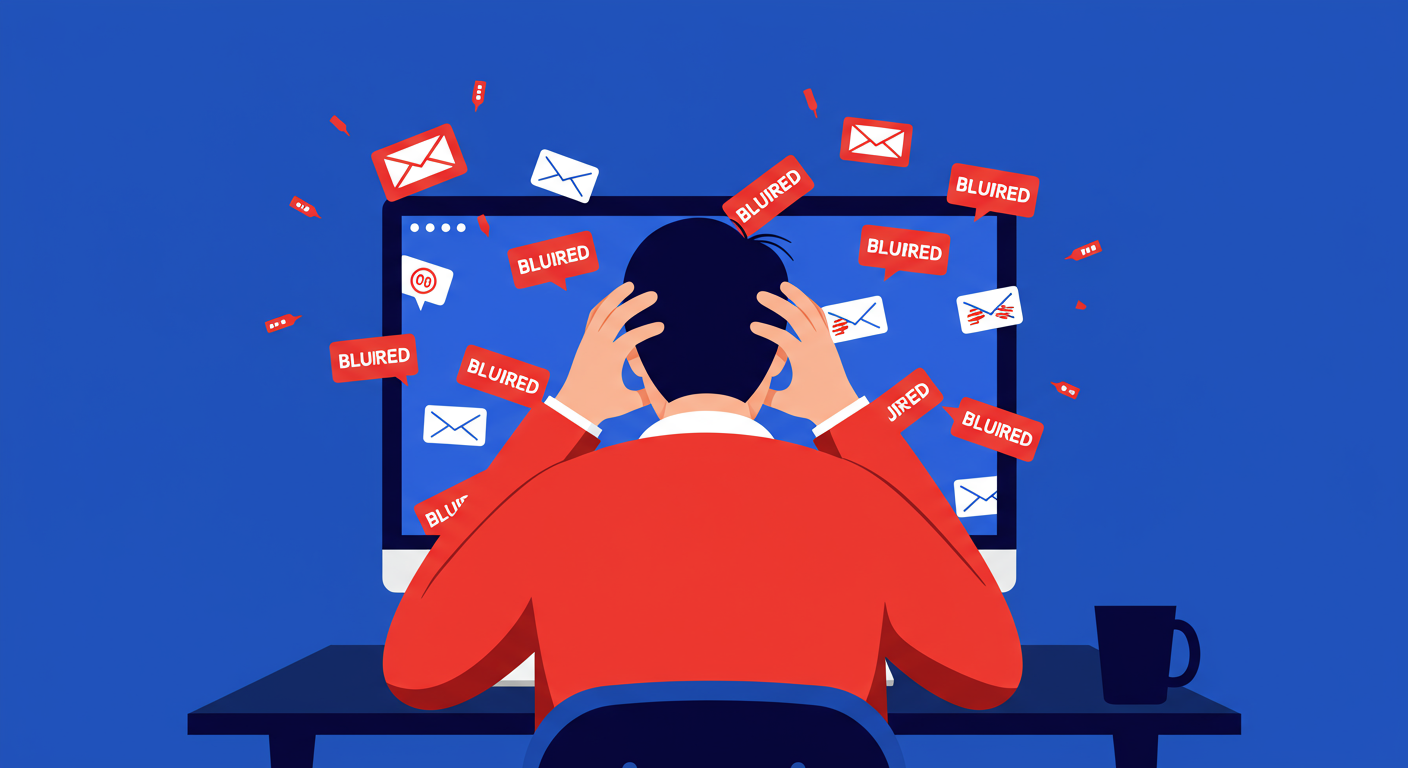
Getting off a blacklist is a reactive process known as delisting. First, you have to discover you’re on a list. Then, you must diagnose the root cause- was it a compromised account sending spam, a misconfigured server, or a poorly vetted email list? Once the issue is fixed, you must formally request removal from the blacklist operator. This entire process can take hours or days, during which the damage continues to accumulate.
This is why prevention is always the best course of action. Proactive monitoring of blacklists is a cornerstone of good email hygiene. This means regularly checking your IPs and domains against major blocklists, not waiting for customers to complain. It also involves carefully monitoring your email metrics, such as bounce rates and spam complaint rates, for early warning signs of a problem.
Ultimately, staying off email blocklists requires treating email deliverability as an ongoing, critical business function, not an afterthought. By respecting your audience, maintaining clean lists, and actively monitoring your reputation, you protect your most vital communication channel. A healthy email program supports your customers, enables your operations, and drives growth, while a blacklisted one becomes a liability that can quietly sabotage your success.


